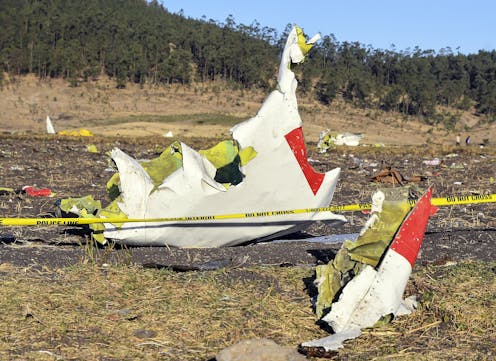Regulatory
Charade
 It
always seems to take a tragedy to reveal the truth about the regulatory system
in the United States.
It
always seems to take a tragedy to reveal the truth about the regulatory system
in the United States.
After
an explosion at an oil refinery, a massive oil spill, a major outbreak of food
poisoning, a coal mine collapse or a train derailment, it comes to light that
regulators, rather than being the overbearing bureaucrats depicted by corporate
apologists, are often unequipped to exercise adequate oversight of the
operations of big business.
That
scenario is playing out once again in the wake of two deadly crashes of
Boeing’s newest passenger jet. Day after day we are learning more details of
how an under-resourced Federal Aviation Administration cut corners in its
review of the company’s 737 Max.
The agency, pursuing a new approach that has been in the works for years, delegated key portions of the approval process to Boeing itself, including the assessment of a new software system that has been implicated in the crashes.
The agency, pursuing a new approach that has been in the works for years, delegated key portions of the approval process to Boeing itself, including the assessment of a new software system that has been implicated in the crashes.
Critics
have long complained that regulators have frequently been captured by the
corporations they are supposed to oversee, meaning that those companies exercise
undue influence over the agencies.
What’s been going on at the FAA is even more pernicious. Boeing is not just swaying the FAA; it is supplanting it. Rather than regulatory capture, this is regulatory eradication.
The
idea that corporations should be allowed to oversee themselves is unwise in
general but particularly wrong-headed when it comes to a company like Boeing.
The aircraft producer has a long record of safety lapses. This goes back
decades.
For
example, after a Japan Air Lines 747 crashed during a domestic flight in 1985,
killing 520 people, Boeing admitted that it had performed faulty
repairs on the plane’s rear safety bulkhead.
In
1989 the FAA proposed a then-record fine of
$200,000 against Boeing for failing to promptly report the discovery that fire
extinguishers on two 757s were faulty.
In
1994 the Seattle Times, after reviewing 20 years of reports submitted to the
FAA, concluded that more than 2,700 Boeing
737s then in service were flying with a defective part that could cause the
plane’s rudder to move unpredictably, possibly turning the aircraft in the
opposite direction being steered by the pilot.
These
kinds of problems continued. In January 2013, after several incidents in which
lithium-ion batteries in 787s caught fire, the FAA ordered the grounding of all
U.S.-based Dreamliners. The head of the National Transportation Safety
Board accused the company of having
submitted flawed safety test results on the batteries.
This
history apparently did not factor into the FAA’s decision to rely heavily on
Boeing during the 737 Max approval process and it did not prevent the agency
from resisting calls to ground the jet until pretty much all of the rest of the
world took that common-sense step following the crash in Ethiopia.
Shamed
into action, the FAA is now behaving more like a real regulator again. Yet this
too is part of the typical scenario: when outrage about a deadly incident
escalates, an agency acts tough. But this rarely lasts. Once the uproar dies
down, the regulators return to their comfortable relationship with the
regulated, and the public is once again put at risk.